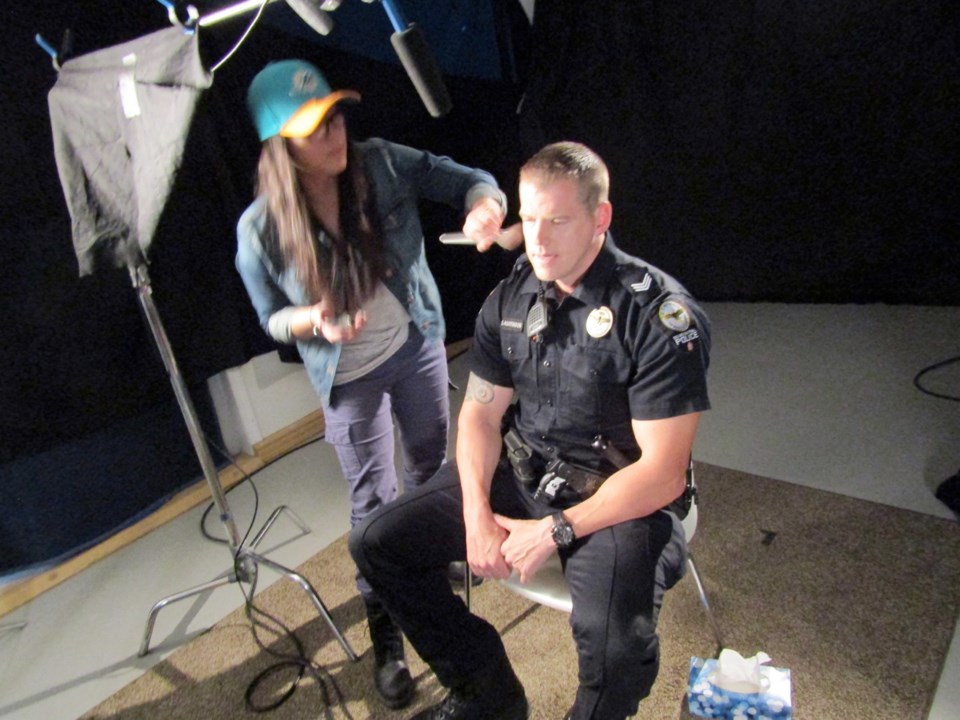Steve Sxwithul’txw doesn’t take offence when he hears Tribal Police Files described as Cops on the reserve. His 13-part documentary excursion into the world of the Stl’atl’imx Tribal Police Service in Lillooet does initially seem like a variation on the long-running Fox reality series.
There’s a big difference, though, says the producer, whose four years as a tribal police officer in Lillooet inspired the series, which premières tonight at 9:30 on APTN.
Sxwithul’txw (pronounced Swee-thult), who also narrates, shows how the approach of tribal police officers differs from those of the municipal police or the RCMP. Along with real-life drama, Sxwithul’txw’s priority was conveying the cultural practices and compassion embraced by officers serving a First Nations community.
“When you think of the title, and if you haven’t been privy to watching any of its episodes, you’d think it would be like that hard-hitting, gritty cop stuff down in the States in the 1990s,” says the Victoria-based filmmaker, who produced Warrior Games and serves as a senior adviser on cultural safety and indigenous employment for the B.C. Ministry of Health.
“It’s well-balanced and that is so important for me as a former cop who is indigenous and someone who, I think, knows what viewers want to see.”
Sgt. Dale Austinson is one of five tribal police officers whose lives are chronicled, cinema verité-style, as they safeguard their community, delicately balancing solid police procedure with cultural sensitivity.
“We are not a tribal police force. We are the Stl’atl’imx police service,” Austinson emphasizes.
Empathy and using communication skills — “your verbal judo” — are essential, he adds.
Sxwithul’txw says it’s a job that requires a big commitment. “They go off-shift and then they’re on call.
“They are a part of this community, yet they’re there to do a job, to protect people.”
In the first episode, Sxwithul’txw and his creative collaborators, including Victoria-based director of photography David Malysheff, waste no time getting down to business.
Viewers are immediately thrust into the action, riding along with police enroute to a motor-vehicle accident, apparently caused by drinking and driving, near Lillooet.
“An officer has to prepare for what they might discover,” Sxwithul’txw says. “There may be injuries, or worse, and more than likely, a mystery to unravel.”
Sure enough, there is one. A smoking silver sedan, its interior reeking of alcohol, has crashed into a tree. Both driver and passenger have left the scene.
“Every time a vehicle hits a tree, the tree wins,” Austinson deadpans as he observes the wreckage.
Const. Leonard Issac explains he has just two hours to get the suspect to a breathalizer in Lillooet, for a possible “impaired driving causing bodily harm” charge.
Police also investigate a report about a mysterious object tossed over an embankment and chief officer Dee Doss-Cody recalls the tension and pressure involved in staring down the barrel of a gun.
“We build up, over 13 episodes, who these people truly are,” Sxwithul’txw says. “From an indigenous perspective, as you work with your own people, it can be challenging. You walk a fine line.”
While Tribal Police Files highlights police participation in community events, it also explores the impact of past traumas on members of the First Nations communities.
Sxwithul’txw, a former student at Kuper Island Residential School from the Penelakut tribe, expressed his gratitude to the community for granting the filmmakers access.
“I’ve been walking on eggshells,” he admits, anticipating local reaction. “I certainly don’t want to upset anybody, but this is real life.”
While participants were asked to sign releases to have their stories told, not everyone did, he says.
“We got between 70 and 80 per cent to buy in, but some said: ‘No, get out of our face,’ ” says Sxwithul’txw, whose crew has filmed for 42 days during winter and spring since their arrival in December 2015.
“We didn’t know what to expect and, of course, we got up there and the crickets were going,” he recalls with a laugh.
“Nothing was happening, and you’re at the mercy of what’s happening in the community.”
Since their intention wasn’t to contrive crime investigations, it was a waiting game, requiring strategic planning in terms of shooting.
“When real-life events broke out, we were happy, because we’re presenting a show that has to have some action, but we were able to do that in a respectful way,” Sxwithul’txw says.
Tribal Police Files doubles as a Valentine to the region’s majestic mountains, arid landscapes and pristine lakes and rivers.
“As indigenous people we are connected to the land,” Sxwithul’txw says, “so we also wanted to highlight its beauty and show why people fight so hard to protect the land.”



